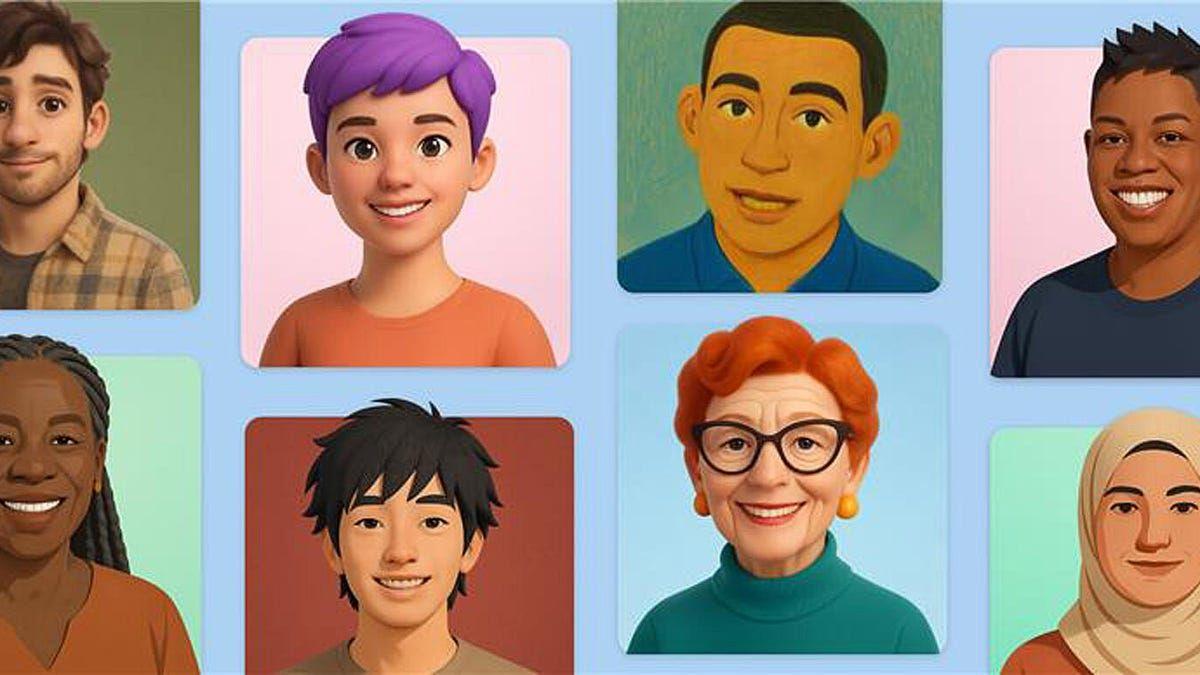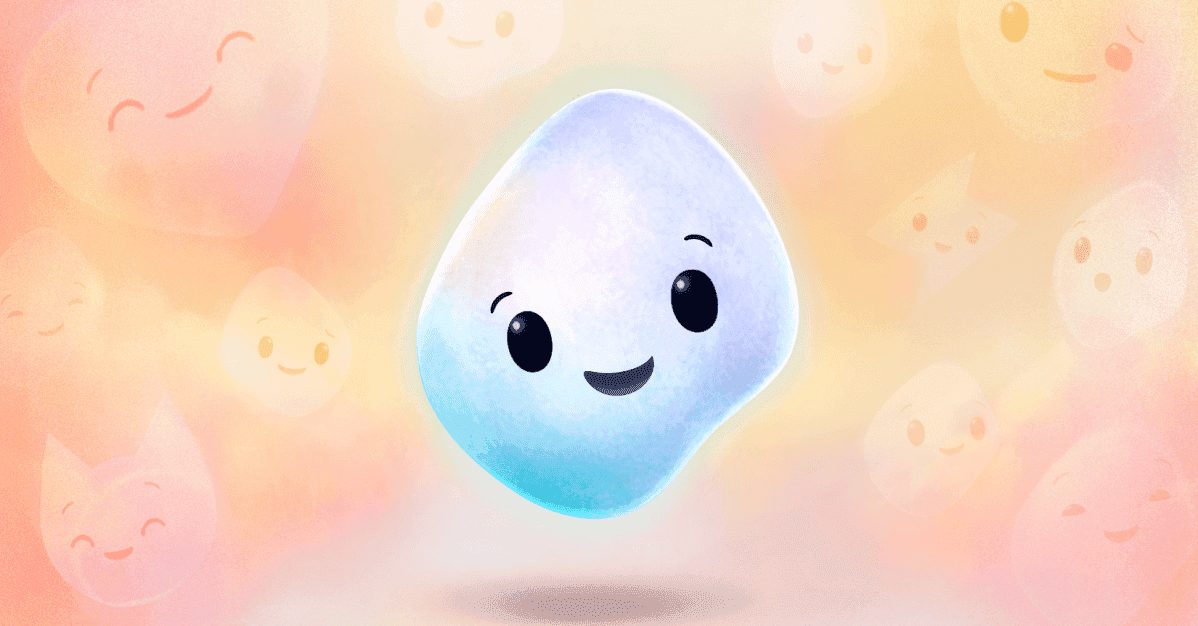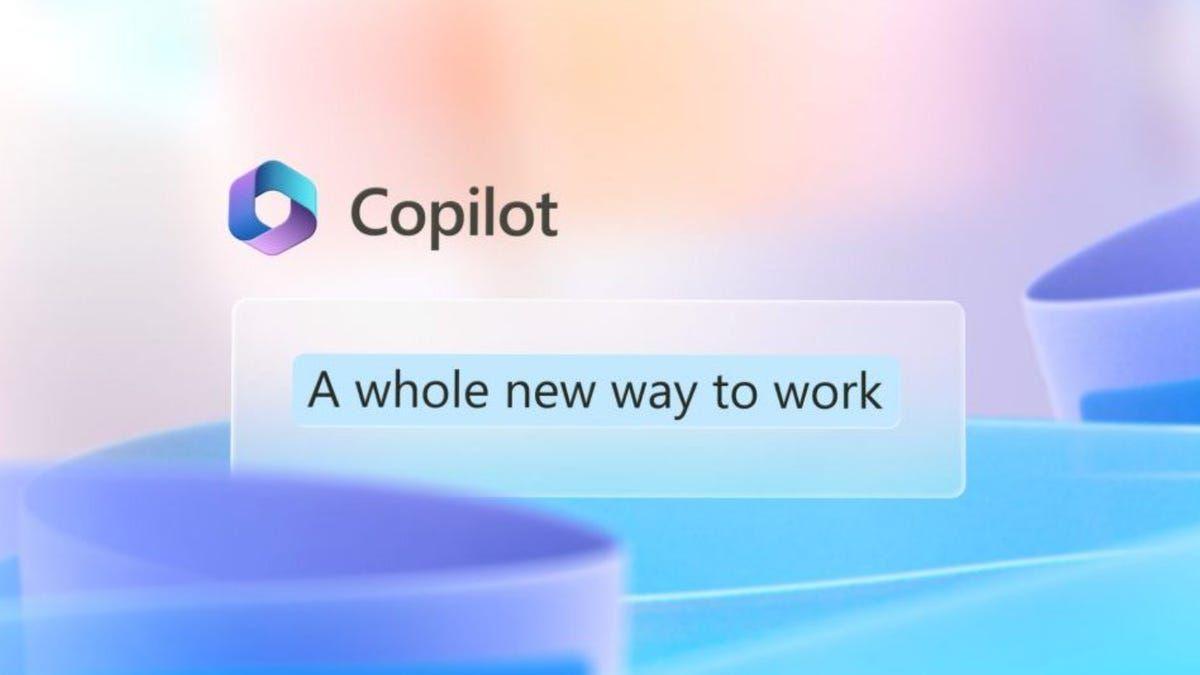Microsoft Introduces Animated Avatars for Copilot AI: A New Era of Human-AI Interaction
5 Sources
5 Sources
[1]
Microsoft lets you pick a character for your AI - with its new Copilot Portraits feature
The feature is available through Copilot Labs in the US, UK, and Canada. When I want to speak to an AI, I often enjoy chatting by voice with Microsoft Copilot. Though the voice I picked has a fun and personable British accent, the AI itself is faceless, with nothing but a background image appearing on the screen. Now, Microsoft is looking to put a face to the voice with a new experiment. Rolling out through Copilot Labs, a new test feature known as Copilot Portraits offers a variety of animated portraits designed to enhance your Copilot Voice chats. You can choose from among 40 portraits, all with different genders, races, and nationalities. Each portrait is stylized and avoids photorealism so you're aware that you're conversing with a bot. Sounds like a cool way to see and hear your Copilot AI. But as usual, there are a few conditions. First, you need a Microsoft account to access Portraits. Second, the option is accessible only through Copilot Labs, which Microsoft uses as a testing ground for new AI experiments. Third, it's available to a limited number of people in the US, UK, and Canada. Fourth, and perhaps most onerous of all, you need a $20-per-month Copilot Pro plan to dive in. Many of the experiments in Copilot Labs are freely available to anyone, but some require a Pro subscription. Assuming you qualify, head to the Copilot website and select the Labs category in the left pane. If Copilot Portraits is ready and waiting for you, you'll see it listed on the screen. Click the Try now button to get started. After checking out all the portraits, choose the one you want to use and pick a voice to accompany it. You can then kick off a conversation. As you chat by voice with Copilot, the image you picked will speak and react to your words. Using animation, the character's mouth will move in sync with the words, providing as natural a conversation as you can expect with an AI. As any AI can behave inappropriately or even dangerously, Microsoft promises to apply certain safeguards and filters to Portraits. The feature is accessible only to people 18 years and older and will clearly state that you're interacting with an AI. At this stage, Microsoft's main goal is to elicit feedback about the feature. The company also says it will keep tweaking Portraits before eventually expanding it to more people. Responding to the announcement about Portraits on X, one person shared their feedback on the experience. "It's great! To the point I was bashful talking initially as the characters are very fixated on the subject. Some comments: they switch language well, this guy is very pleasant but sounds like he smokes 2 packs a day (tho he promised he's not been sneaking cigs). They will tell stories randomly, approximate rhyme but will not sing. They will critique (or at least positively respond to) recitation of a poem, but will not alternate verses with you." This isn't Microsoft's first attempt to provide a face to Copilot. In July, the company launched Copilot Appearance with small blob-like avatars that will smile, nod, and even raise an eyebrow while speaking with you. Though Appearance and Portraits are designed with the same purpose, the two offer different spins on what you see and how the image interacts with you.
[2]
Microsoft is giving Copilot AI faces you can chat with
Microsoft is trying to make Copilot more approachable by giving the AI assistant an animated face to talk with. The experimental "Portraits" feature in Copilot Labs is currently available in the US, UK, and Canada, and provides 40 stylized human avatars that respond with natural expressions during real-time voice conversations. Announcing the new feature on X, Microsoft AI CEO Mustafa Suleyman says Portraits was developed in response to some Copilot users saying "they'd feel more comfortable talking to a face when using voice." The feature allows users to select a portrait and pair it with a voice, aiming to make verbal conversations with the chatbot feel more natural compared to text-based interactions. This is Microsoft's latest attempt to develop Copilot into a character that's more appealing to communicate with, having previously announced a similar feature called "Copilot Appearances" in July. The notable difference between the two is that Portraits is based on human appearances instead of an animated cartoon blob. "This experiment leverages VASA-1, an advanced AI technology developed by Microsoft Research to create real-time, visual AI conversations," Microsoft announced on the Copilot Discord server. "The innovation allows us to generate natural facial expressions, head movements, and lip-sync from just a single image -- no complex 3D modeling required." The Portraits experiment follows rival AI provider X introducing 3D avatars for its Grok chatbot, including an anime-inspired AI girlfriend companion with an NSFW mode. Microsoft is taking things slow with the rollout of Portraits, likely due to safety concerns around harmful interactions between users and rival chatbots, like those under investigation from Character.AI. "Each portrait is intentionally stylized and not photorealistic, offering you visual variety while offering the same trusted Copilot intelligence and safety features you rely on," Microsoft said on the Copilot blog. Availability is restricted to a "limited set of users" aged 18 or older, according to Microsoft, with daily and session-based time limits in place alongside "clear indicators that you are interacting with AI technology."
[3]
Microsoft tries to make Copilot friendlier with avatars
Microsoft is testing talking avatars for Copilot to see if users feel more at ease chatting with a face instead of just a text box. Our US Editor tried them out, only to find the digital stare was more creepy than comforting. Dubbed Copilot Portraits, Redmond's AI will offer a choice of 40 avatars to interact with, along with a selection of synthetic voices. Microsoft is trying this out because, while text-based prompts are the norm, many users prefer talking to their bot instead of typing, according to Mustafa Suleyman, CEO of Microsoft AI and former co-founder of Google DeepMind. "We've heard from some users that they'd feel more comfortable talking to a face when using voice. So in the US, UK, and Canada, we're rolling out a new Copilot Labs experiment where you can talk with animated portraits," Suleyman said. "Some users may not see it right away. This is very much a prototype to help us learn more about how people feel talking to an AI." The designers deliberately made the avatars non-realistic and animated them to simulate active speech. Redmond is carefully monitoring the limited trial by placing strict time limits on how long users can interact with their digital buddies and excluding those under 18 from using the system. "We're taking our time with this experiment to ensure we're providing a positive, safe, and engaging experience for everyone," the Copilot team said in a blog post. "In addition to maintaining the same guardrails and content filters already available." Certainly, the rollout is slow enough that some Reg hacks like this Vulture can't access it yet. However, US Editor Avram Piltch was able to get it working on his PC. He tried using a couple of different avatars, including the purple-haired androgynous person and the young Asian man with a brown background. When he clicked through, the avatar appeared in the middle of a black screen with microphone controls below it. By default, his microphone and speaker were activated, so he was able to converse immediately with the bot and watch its expressions. Each avatar has a different accent and Piltch found that they pronounced his name differently, with some using a long A (correct) and some using a short A. He asked the man, who had a British accent, what kind of accent he had, and the first time he asked, the avatar described it as from south London. However, when Piltch asked in a second session, the same avatar said he had a "neutral American accent," despite clearly being British. Later, he asked the purple haired person how many digits Pi has. "Well Pi is infinite so it has an infinite number of decimal places. We usually round it to a couple of digits like 3.14, but you can keep going as long as you want," it said. Occasionally, the avatars' speech would appear to be cut off for a second or two by static as if they were on a phone with a bad connection. Piltch also said it was creepy having the avatars appear to be staring at him through the screen with their eyes and faces moving even in between prompts. And it was even more off-putting for him to have each avatar, as soon as it loads, greet him by his first name and say things like "hey there Avram! So what's your mind today: something random, something curious or maybe just a fun fact to dive into?" This made him feel like he was being watched. Microsoft is also placing a 20-minute time limit on how long you can use the avatars. After using them for a total of 13 minutes, Piltch got a warning that he had seven minutes left. These Portraits are a step along the road that Suleyman announced earlier this year, with the preview of Copilot appearances. In April, he showed off a variety of avatars that Microsoft was playing with, from a simple talking blob to something more stylistic - with even Clippy being touted as an example, presumably for historical masochists. Youtube Video Given it has been five months since that presentation, and the best Microsoft could come up with was generic faces with moving mouths, then progress is going slowly. But it highlights Suleyman's quest to make AI more human-like, something he has been actively pursuing since leaving Google to set up Inflection AI, and then moving to Microsoft. Whether or not the wider public wants, or is ready, for talking AI avatars remains to be seen, but Portraits is a step along this road. ®
[4]
Microsoft Copilot tests portraits using VASA-1 AI
Microsoft has introduced an experimental "Portraits" feature for its Copilot AI assistant in the United States, United Kingdom, and Canada. Located in Copilot Labs, the function provides animated faces for real-time voice chats, developed in response to user feedback requesting a more personal interaction. The Portraits feature offers a selection of 40 stylized human avatars designed to display natural facial expressions, head movements, and lip-syncing during voice conversations. Microsoft AI CEO Mustafa Suleyman stated on X that the capability was created because some users said "they'd feel more comfortable talking to a face when using voice." Users can select a portrait and pair it with a voice, which aims to make verbal conversations feel more natural compared to text-based interactions. This initiative is Microsoft's latest attempt to develop Copilot into a more approachable character. A previous feature, "Copilot Appearances," launched in July and used an animated cartoon blob for its visual persona. The notable difference with Portraits is its reliance on human-like appearances, marking a clear shift in the design strategy for the AI assistant. The experiment is built on VASA-1, an advanced AI technology from Microsoft Research. According to a company announcement on the Copilot Discord server, "This experiment leverages VASA-1... to create real-time, visual AI conversations." The technology generates the animated effects from a single static image, which removes the need for complex 3D modeling to produce the natural facial expressions, head movements, and lip-syncing. Microsoft's cautious rollout of Portraits follows rival AI provider X's introduction of 3D avatars for its Grok chatbot, which includes an anime-inspired AI girlfriend companion with an NSFW mode. The deliberate pace is also informed by safety concerns regarding harmful user interactions with other chatbots, such as those from Character.AI, which have faced investigations. To address safety, the company emphasized the avatars' design. On its blog, Microsoft said, "Each portrait is intentionally stylized and not photorealistic, offering you visual variety while offering the same trusted Copilot intelligence and safety features you rely on." Access is currently restricted to a "limited set of users" aged 18 or older. Microsoft has also implemented daily and session-based time limits and provides "clear indicators that you are interacting with AI technology."
[5]
Microsoft adds animated human avatars to Copilot for more natural conversations
Portraits allow users to select from 40 AI-generated avatars that respond in real time with facial expressions, head movements, and lip sync. Microsoft is currently testing yet another new feature for its AI assistant, Copilot, which will give the chatbot a human-like face during conversations. The feature, known as Portraits, is reportedly being rolled out to users in the United States, United Kingdom, and Canada via Copilot Labs. Portraits allow users to select from 40 AI-generated avatars that respond in real time with facial expressions, head movements, and lip sync. The avatars can also be paired with various voices, making voice-based interactions with Copilot feel more natural than plain text responses. Mustafa Suleyman, CEO of Microsoft AI, announced the launch on X, stating that the company created Portraits in response to user feedback indicating that they preferred speaking to a face rather than a disembodied voice. This system is powered by Microsoft's VASA-1 technology, a research tool that can create lifelike expressions and animations from a single image without the need for complex 3D modelling. According to the company, the avatars are deliberately stylised rather than photorealistic in order to strike a balance between realism and safety. Also read: Nothing unveils Essential AI platform that lets you create personalised apps: Check details This is not the first time the company has attempted to give Copilot a more approachable image. In July, Microsoft introduced Copilot Appearances, which used cartoon-like blobs. Portraits, on the other hand, tend to use avatars that are more human-like. The announcement comes as competitors such as X (formerly Twitter) promote similar features, such as 3D avatars for its Grok chatbot, some of which serve as AI companions with controversial modes. Microsoft, on the other hand, is taking a more cautious approach: Portraits are only available to a subset of adult users, with daily usage limits and clear on-screen indicators that remind users they are interacting with AI.
Share
Share
Copy Link
Microsoft launches 'Portraits,' an experimental feature for Copilot AI, offering animated human-like avatars to enhance user interaction. The feature, currently in testing, aims to make AI conversations more natural and engaging.
Microsoft's New Approach to AI Interaction
Microsoft has unveiled an experimental feature called 'Portraits' for its Copilot AI assistant, marking a significant step towards more personalized and engaging human-AI interactions. The feature, currently being tested in the United States, United Kingdom, and Canada, offers users a selection of 40 animated human-like avatars to interact with during voice conversations
1
2
.The Technology Behind Portraits
At the heart of this innovation lies VASA-1, an advanced AI technology developed by Microsoft Research. This cutting-edge system enables the generation of natural facial expressions, head movements, and lip-syncing from a single static image, eliminating the need for complex 3D modeling
4
. The avatars are intentionally stylized and non-photorealistic, striking a balance between visual appeal and maintaining a clear distinction from real humans2
.User Experience and Customization

Source: ZDNet
Users can select from a diverse range of avatars representing different genders, races, and nationalities, each paired with a unique voice
1
. This customization allows for a more personalized interaction experience. The avatars respond in real-time with facial expressions and movements, aiming to make voice-based conversations feel more natural compared to text-only interactions5
.Safety Measures and Rollout Strategy
Microsoft is taking a cautious approach with the rollout of Portraits, implementing several safety measures:
- Age restriction: Only users 18 years and older can access the feature
1
. - Time limits: Daily and session-based time restrictions are in place
2
. - Clear AI indicators: Users are consistently reminded that they are interacting with AI technology
4
. - Limited availability: The feature is currently accessible to a select group of users in specific regions
1
2
.
Industry Context and Competition
The introduction of Portraits comes at a time when other AI providers are exploring similar avenues. For instance, X (formerly Twitter) has introduced 3D avatars for its Grok chatbot
2
. However, Microsoft's approach appears more measured, likely due to ongoing investigations into potential harmful interactions between users and AI chatbots4
.Related Stories
User Feedback and Observations
Early user feedback has been mixed. While some find the feature engaging, others have reported feeling uncomfortable with the avatars' constant gaze
3
. Users have noted the avatars' ability to switch languages and respond to various prompts, though with some limitations in areas like singing or alternating verses in poetry recitation1
.Future Implications
As Microsoft continues to refine Portraits based on user feedback, this feature could potentially reshape how people interact with AI assistants. The company's focus on creating more approachable and human-like AI interactions aligns with the vision of Microsoft AI CEO Mustafa Suleyman, who has been advocating for more personable AI experiences
3
4
.References
Summarized by
Navi
[3]
[4]
Related Stories
Microsoft Unveils Copilot Appearance: A New Face for AI Interaction
26 Jul 2025•Technology

Microsoft Copilot V2 Introduces Human-Like Voice Capabilities, Challenging AI Competitors
30 Sept 2024•Technology

Microsoft Unveils Major Copilot Upgrades: Web Actions, Vision, and Personalization
05 Apr 2025•Technology

Recent Highlights
1
Google launches Gemini 3 Flash as default AI model, delivering speed with Pro-grade reasoning
Technology

2
OpenAI launches GPT Image 1.5 as AI image generator war with Google intensifies
Technology

3
OpenAI launches ChatGPT app store, opening doors for third-party developers to build AI-powered apps
Technology





